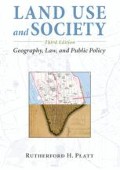Abstract
When a talkative seatmate on a long flight asks me, “What do you do?” I respond that I am both a geographer and a lawyer, which usually earns a blank stare. At first glance, geography and law may seem to have as much in common as astronomy and neurology, or mathematics and poetry. As applied to problems of managing land and water resources, however, the two fields are logical and necessary allies, with much to contribute to the understanding and resolution of land use problems like those listed at the end of Chapter 1.
I cannot count upon the enjoyment of that which I regard as mine, except through the promise of the law which guarantees it to me. It is law alone which permits me to forget my natural weakness. It is only through protection of law that I am able to enclose a field, and to give myself up to its cultivation with the sure though distant hope of harvest.
John Locke, Second Treatise of Government, 1689
The chief function of government is to protect and preserve private property.
Thomas Jefferson, Letter to Thomas Paine, 1789
Rights and permissions
Copyright information
© 2014 Rutherford H. Platt
About this chapter
Cite this chapter
Platt, R.H. (2014). Shaping the Human Landscape: The Interaction of Geography and Law. In: Land Use and Society. Island Press, Washington, DC. https://doi.org/10.5822/978-1-61091-455-0_3
Download citation
DOI: https://doi.org/10.5822/978-1-61091-455-0_3
Publisher Name: Island Press, Washington, DC
Print ISBN: 978-1-59726-454-9
Online ISBN: 978-1-61091-455-0
eBook Packages: Earth and Environmental ScienceEarth and Environmental Science (R0)

